If you head 1500 km out from the west coast of Australia into the eastern Indian Ocean, about 2600 km northwest of Perth and 380 km south of Jakarta, Indonesia you will find Christmas Island. An equatorial island only 135 km sq in size, 63% is protected in the form of the Christmas Island National Park. The island is a territory of Australia, along with the Cocos Keeling Islands, which are 975 km west-southwest of Christmas Island.
Christmas Island has never been connected to another land mass, having arisen as a volcano 44 million years ago. The collapse of its caldera, subsequent uplift events and continuing formation of coral reefs have created a basalt core capped with jagged limestone.
Christmas Island’s coastline comprises sheer limestone cliffs, 20 m high, with intervening small coral or sandy rubble beaches. The inland plateau has hills rising 160 to 360 m above sea level. A few small freshwater springs occur especially on the west coast in The Dales. Deposits of rich phosphate are found on the plateau, originating from either seabird guano or ancient marine sedimentary deposits.
Contents
- Christmas Island
- Why is it called Christmas Island?
- What Makes Christmas Island Special?
- Christmas Island Crabs
- Christmas Island Birds
- Christmas Island Bats
- Christmas Island Marine Life
- Christmas Island Fishing
- Christmas Island Flag
- Christmas Island Population
- Christmas Island People
- Christmas Island Accommodation
- Flights to Christmas Island
- Christmas Island Language
- Christmas Island Song
Christmas Island
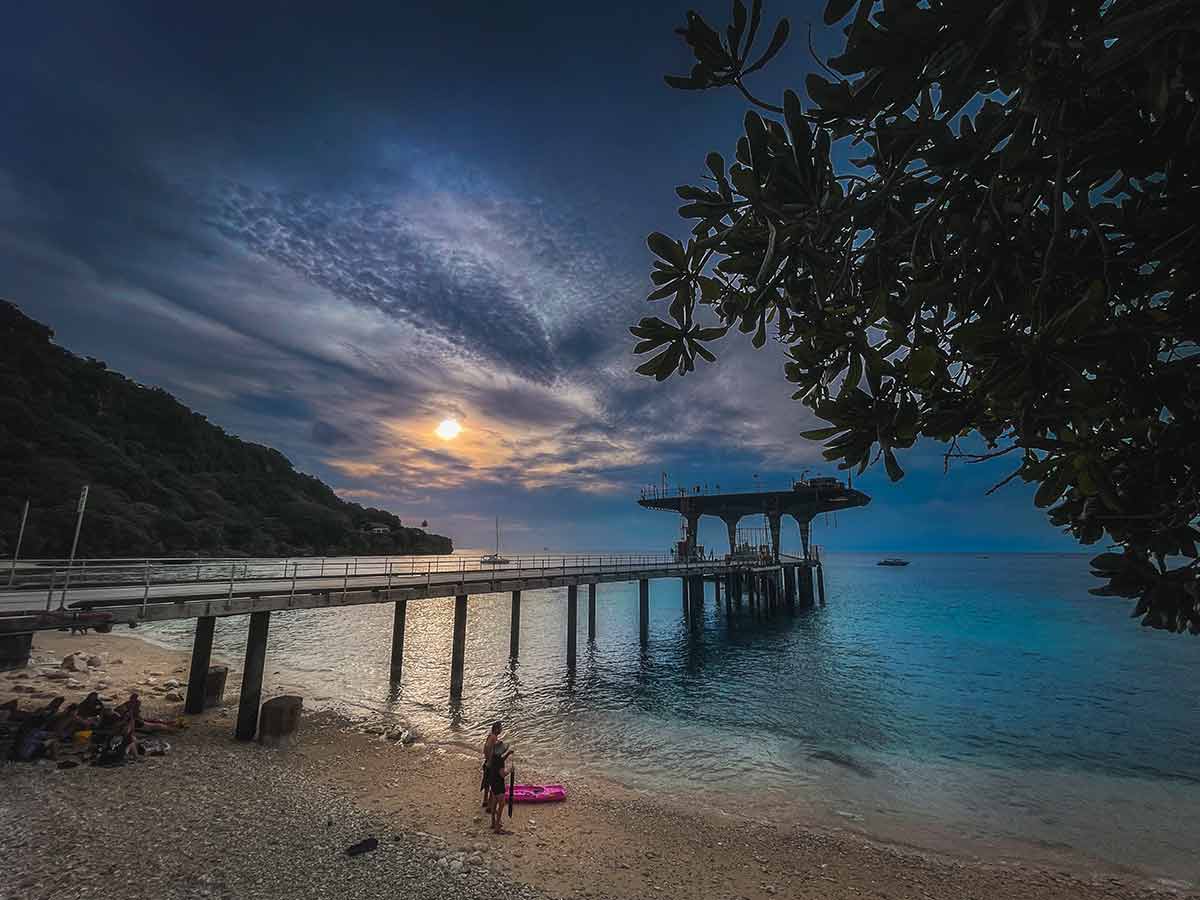
Why is it called Christmas Island?
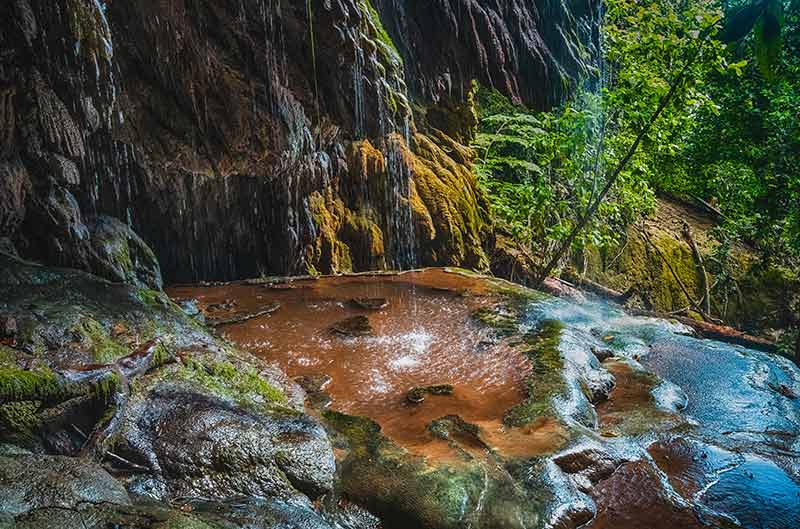
Its name goes way back into the history of the island. Many ships passed near the island sighting it as far back as the 1400s.
It wasn’t until 1643 when Captain William Mynors, on board the Royal Mary, a British East India ship actually named it in the early hours of Christmas Day morning.
Despite this, the first landing on the island wasn’t until 1688. Sailors from William Dampier’s British ship, the Cygnet, set foot ashore after a storm made them change course while heading to Sumatra.
They found provisions including enough water, boobies and frigates to feed the whole ship, in the area around Hugh’s Dale.
What Makes Christmas Island Special?
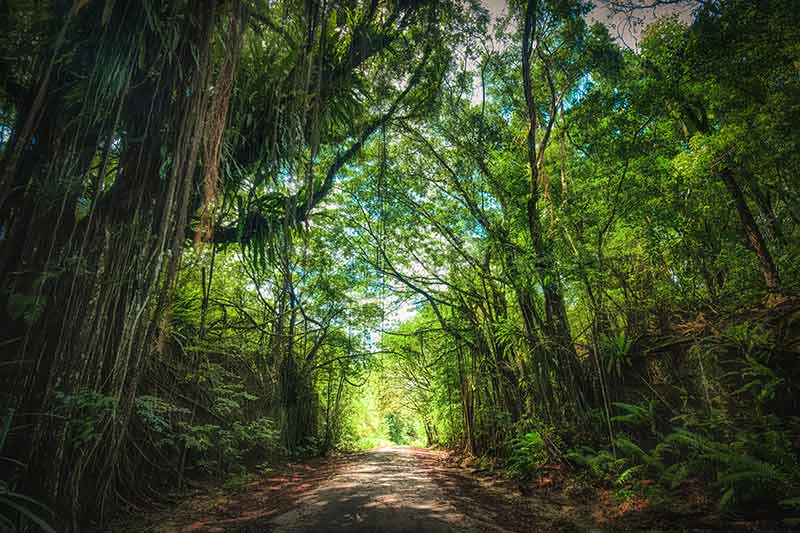
Christmas Island is truly a hidden gem, Australia’s answer to the Galapagos. It has a unique natural environment with so many endemic wildlife species only found on the island, some critically endangered.
Unfortunately, one species has already become extinct in the last few years, the Christmas Island Pipistrelle microbat. This was mainly due to predation by the invasive Yellow Crazy ant.
Christmas Island Crabs
Red Crabs
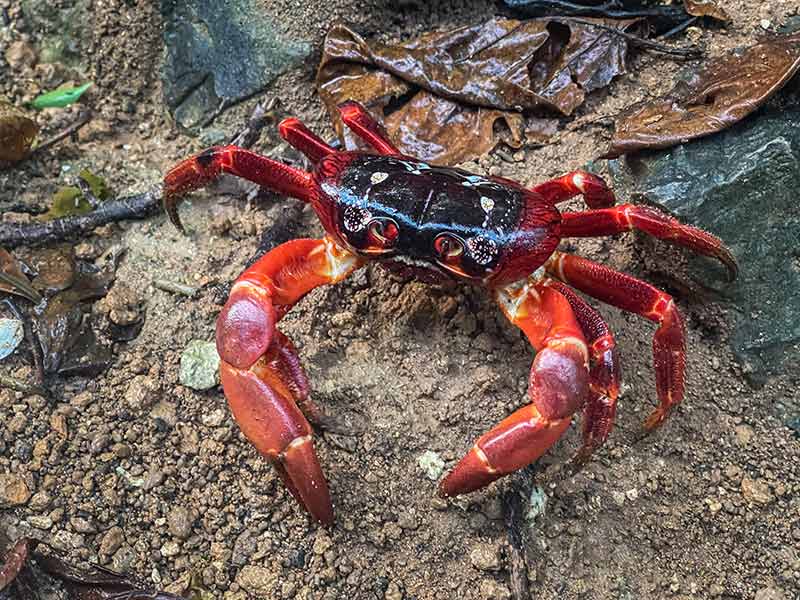
Christmas Island is renowned worldwide for its breathtaking red crab migration. Red land crabs can be seen even when not migrating. But it is their seasonal migration from the forests all over the island to the ocean that is a truly awesome event to witness.
In the wet months from October to December, they synchronize their mass exodus to the coast. The rains in fact trigger this awesome migration.
Approx. 40 million red crabs head along paths, roads, under crab grids or over the Murray Rd crab bridge in their quest to get to the ocean. Many roads are closed and much of the island traffic is brought to a halt.
As long as the rains and high humidity persist, the crabs walk up to 9km in a day, in a dead straight line from their forest homes to find their female mate along the coast.
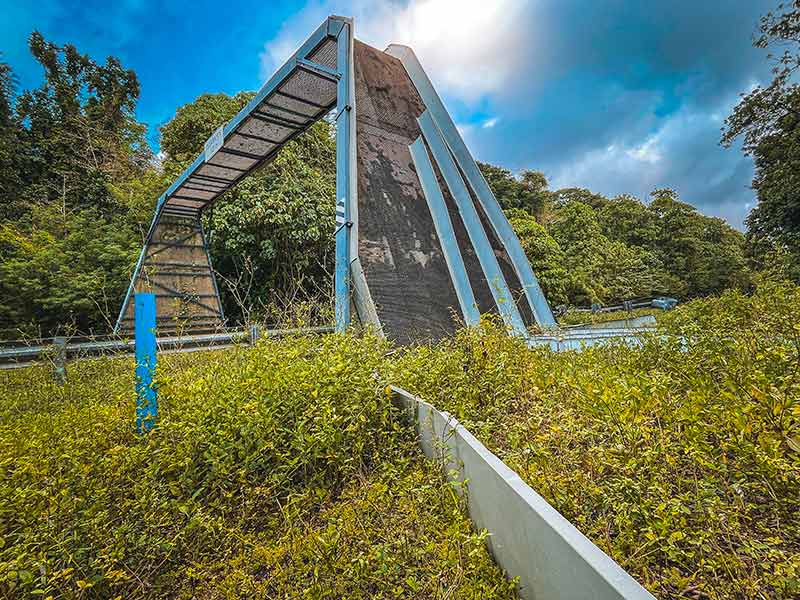
After copulation, the males return to the forest but it takes another two weeks for the females to release their eggs into the sea.
They wait for the turn of the high tide just before dawn during the last quarter of the moon, then they too return to their forest burrows.
A month later, the newly formed baby land crabs who survived the period of becoming zooplankton in the ocean, emerge to also migrate back to the forests.
Other Christmas Island Crabs
There are at least 20 terrestrial and intertidal crabs on the island, including ghost, nipper and hermit crabs. But let’s not forget the coloured crabs, not just the red, but also blue, brown and purple crabs.
Blue Crabs
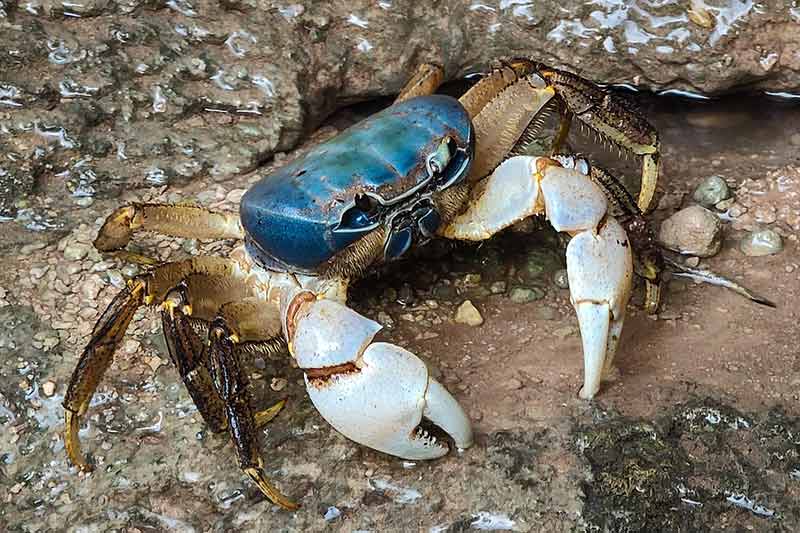
The sky or powder blue coloured crabs were first discovered only recently in 2012. They are unique to the island, being found nowhere else in the world.
Their burrows are mostly in and around the Hugh’s Dale area and Martin Point, on the western coastline of Christmas Island.
They are a similar size to the red crabs but have a more aquatic behaviour, requiring surface freshwater, hence their specific location on the island.
Robber Crabs
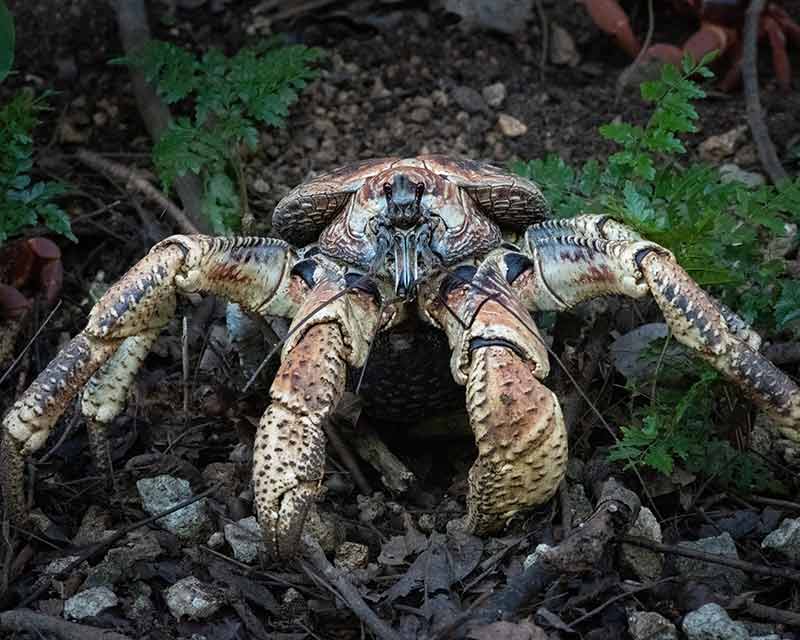
My particular favourite though is the robber crab, or the coconut crab, the world’s largest crustacean. And while found in many tropical destinations around the world, Christmas Island has the largest population, possibly over a million or more.
Growing to 4kg and up to 1 metre across, they are a rather stunning crab with a shell that comes in a mix of colours. They also have a very keen sense of smell, 100 times that of dogs.
And they love to steal things. In fact, anything left on the ground is open to theft. From garden spades to car keys, they will make off with it if given half of the chance!
Being so high off the ground, this is a crab you should drive around and not drive over when avoiding them on the roads. And always travel in front not behind them, as they are quite shy and will often crawl backwards to get away.
Christmas Island Birds
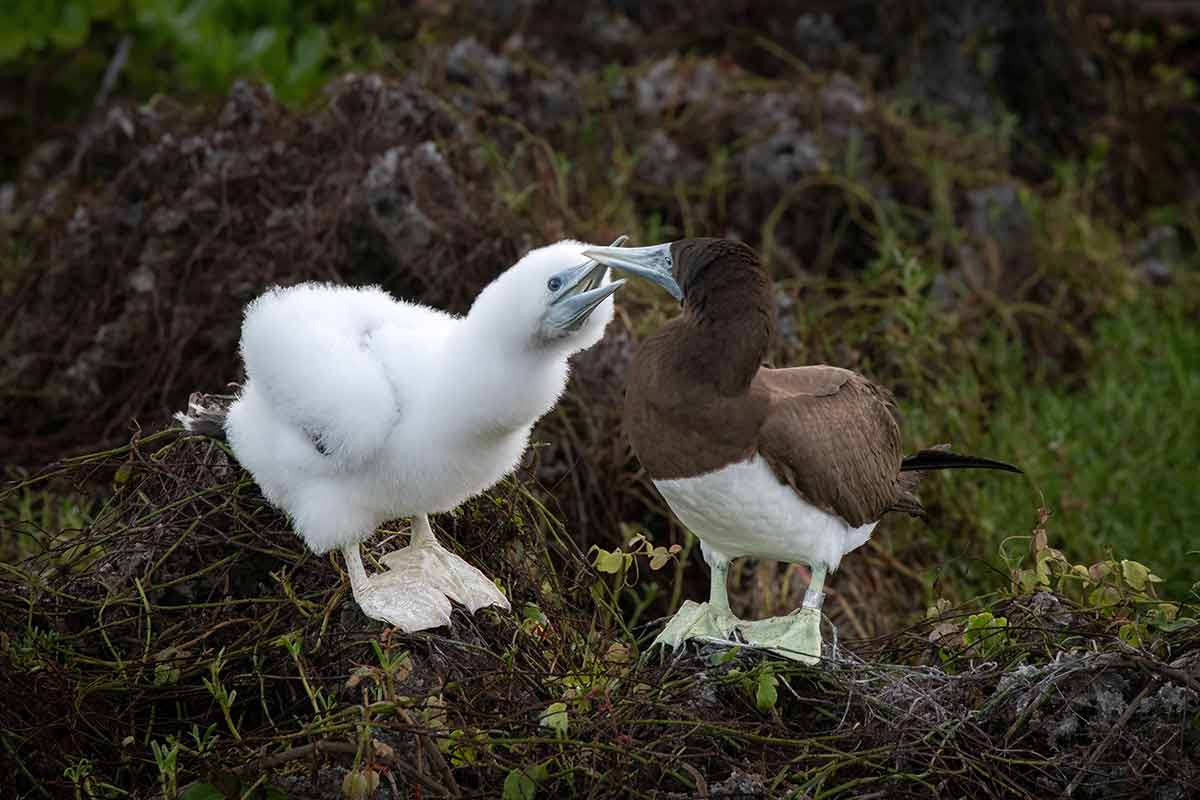
Birds are one of the main attributes of the island, which is an ornithological paradise. With over 80 land and migratory species living on the island, the birds are also relatively easy to spot. Many can be seen just around Flying Fish Cove or the Settlement area.
But Christmas Island is very special in that there are 8 bird species found nowhere else in the world.
These endemic birds are the predatory Christmas Island Goshawk and Hawk-owl, the Christmas Island Frigate Bird, Christmas Island White-eye, Christmas Island Imperial Pigeon, Emerald dove, Christmas Island Thrush and the Christmas Island Glossy Swiftlet.
As well as these rarities, more than 70 migratory birds also frequent the island, particularly due to its proximity to Southeast Asia.
Common noddies often can be seen making their nests in vertical cliff rocks, well away from predators.
The Australian kestrel and White-breasted water hen are two species that are now well-established and actively breed on the island.
Christmas Island Frigate Bird
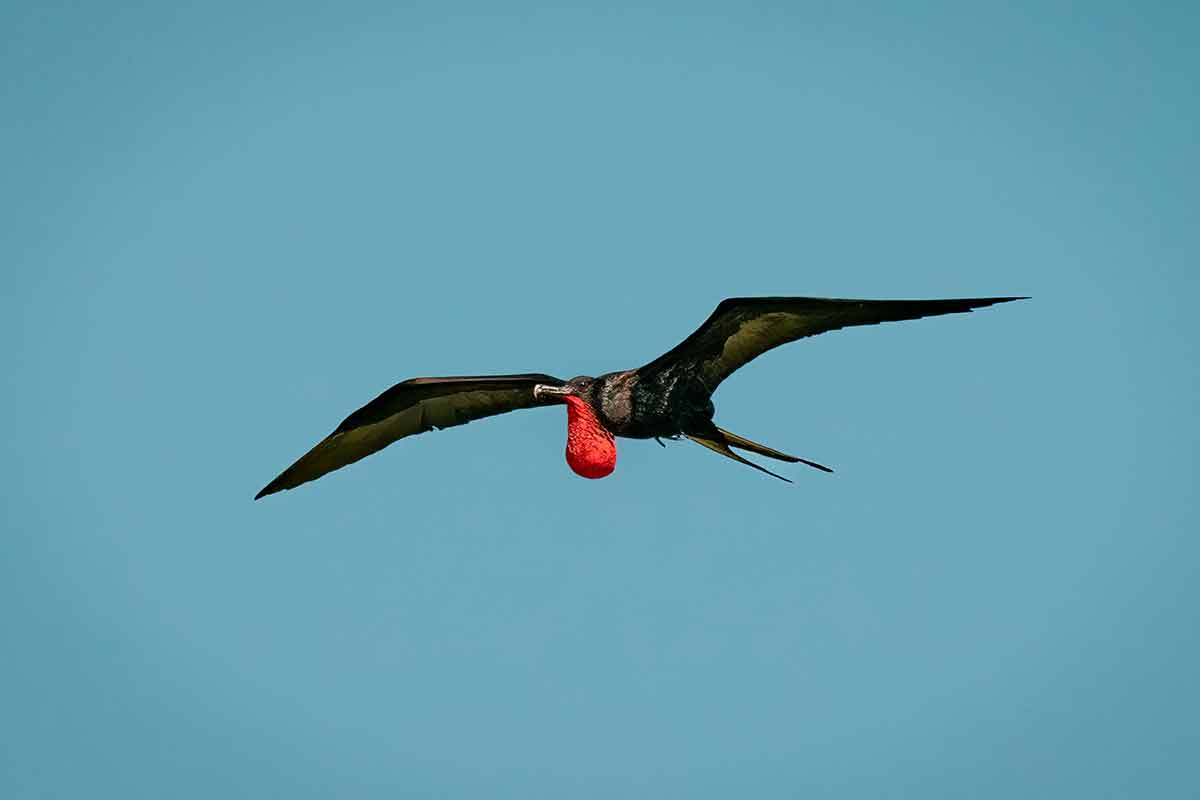
The rarest frigate bird on the planet, the Christmas Island Frigate bird is distinctive from the Greater and Lesser frigates. It is much larger at 100cm long with a 2.1m wingspan.
Actively breeding males have a bright red throat pouch which they impressively inflate to attract their females. There are only approx. 1000+ breeding pairs on the island and are classed as critically endangered.
Booby Birds
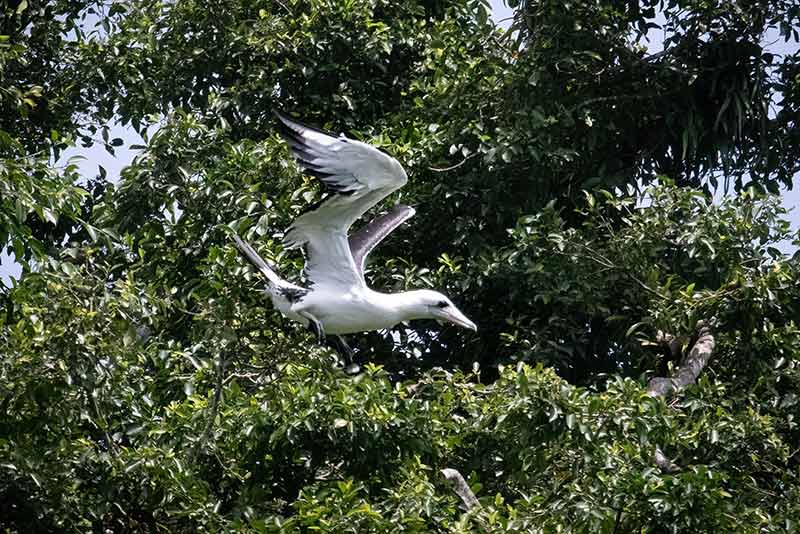
One of the species is my favourite bird, the Booby bird.
I first met Booby birds in the Galapagos Islands, the blue-footed variety, and fell in love with their awkwardness and goofy nature.
Well, the Boobies on Christmas Island are no different! There are three species here, the red-footed booby, the brown booby and the largest in the world, the Abbott’s booby.
The latter is the rarest booby in the world. These endangered Abbott’s boobies are hard to spot.
With only about 6000 on Christmas Island, this is the last place on earth where they can be found.
They are most often seen around the tall trees in LB4 Lookout, in the middle of the island.
The population of brown boobies on the island is the largest in the world.
Easy to find, they prefer the rugged volcanic coastline, making their nests in and around the sharp irregular cliff rocks.
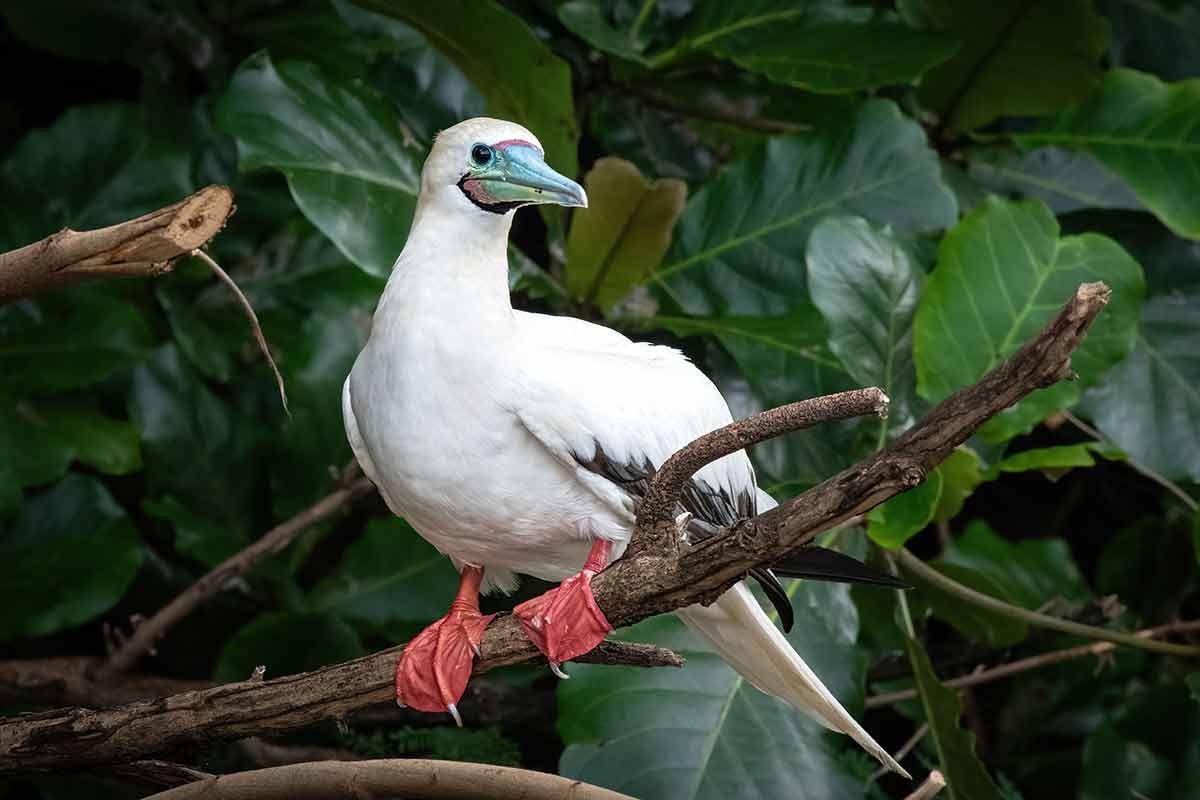
Meanwhile, the bright red-footed boobies love to nest in the trees of the island’s middle terrace, especially near the Golf Course and along Lily Beach Road.
You may even see them gathering nest materials along the roadside, walking rather awkwardly on the gravelled surface.
Silver Bosun Tropic Bird
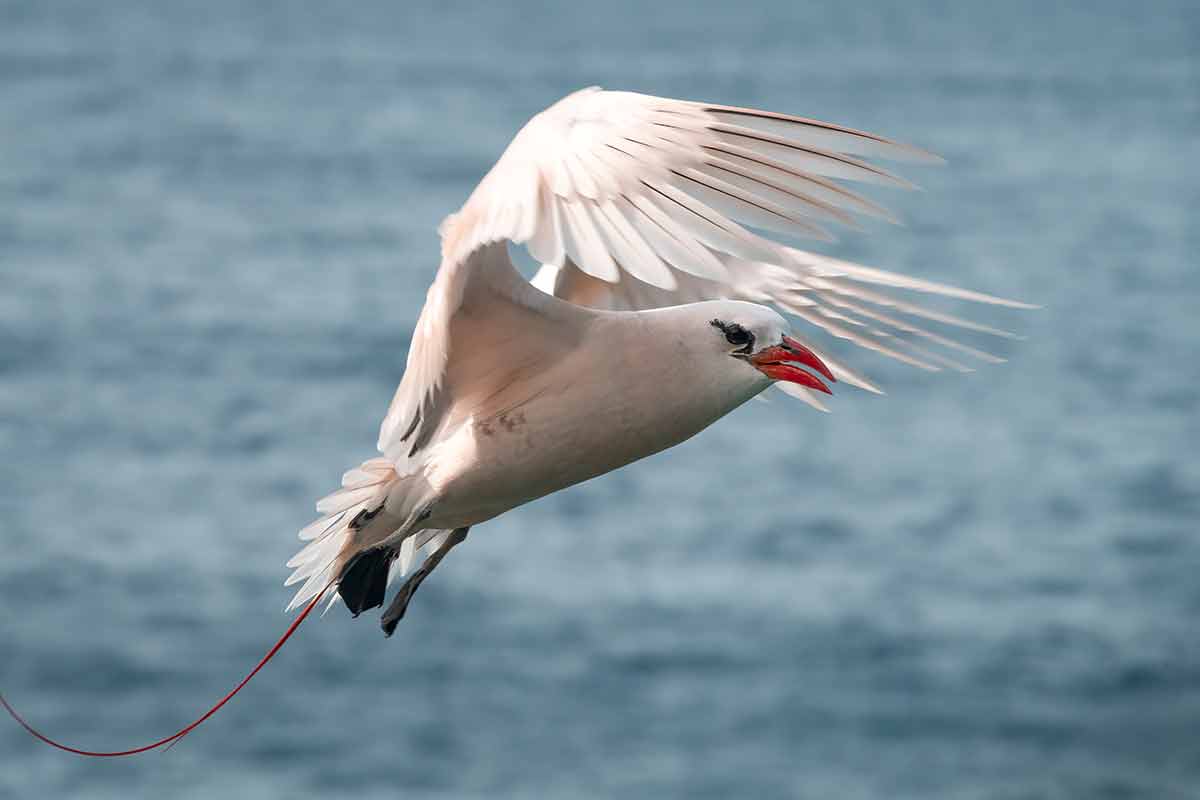
While the Red-tailed Tropic bird visit is a migratory visitor to the island, the slightly smaller and much rarer White-tailed or Silver Bosun bird is one of the endemic species.
It is a rather stunning white-silver colour with gold tones and is featured on the Island flag.
Both species can be seen flying around Flying Fish Cove the Settlement. And they nest often along the cliff tops, often hidden on the ground in the bushes, so be careful when walking around.
Christmas Island Bats
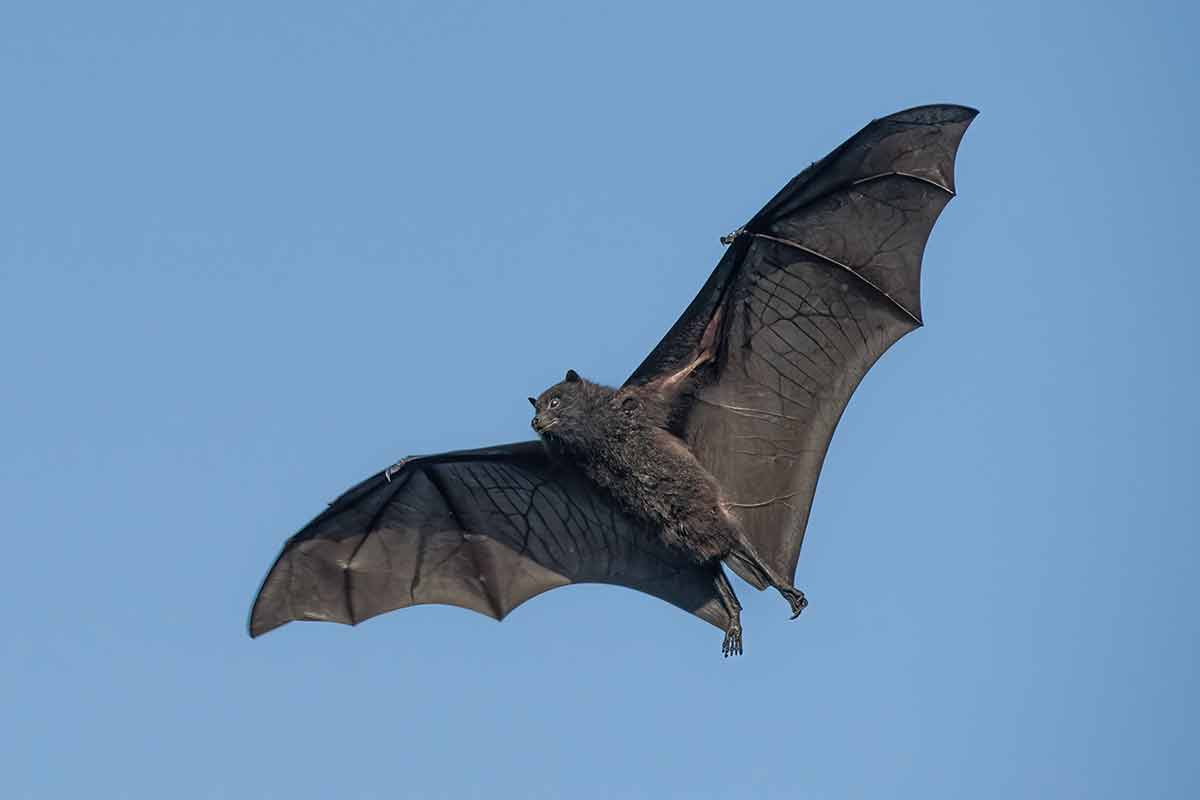
Another endemic species is the small black flying fox (megabat).
It is the only diurnal fruit bat of its kind in the world, that is it flies and eats during the daytime. And it is found only on Christmas Island with numbers now down to about 3000 bats.
At up to 500gms, it is smaller than some of its Australian mainland ‘cousins’. And it is quite a sight to spot it feeding on native fruit trees around Flying Fish Cove during the day.
I certainly didn’t expect to see a flying fox mixing it with the frigate birds and boobies in the skies overhead in broad daylight!
Christmas Island Marine Life
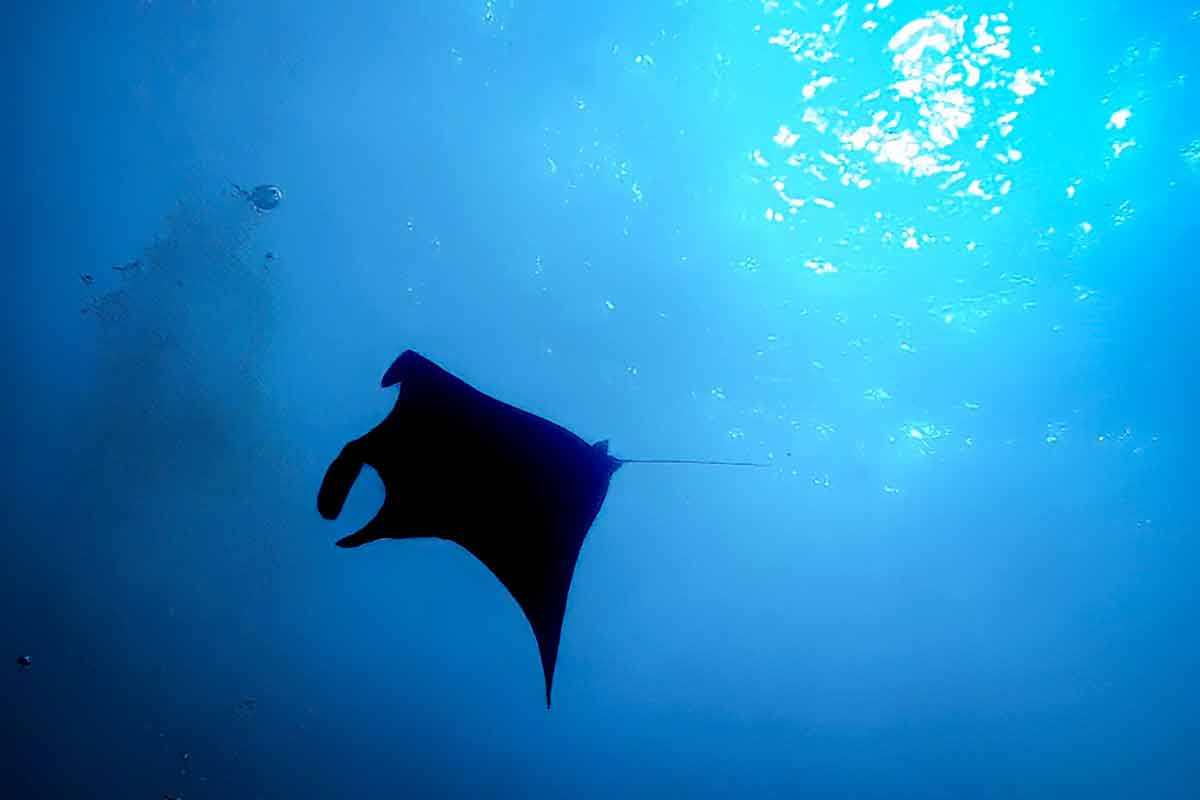
Christmas Island is blessed with crystal clear waters and a narrow fringing coral platform surrounding the whole island.
This fringing reef suddenly drops to the ocean floor, not far off the island’s waterline.
Not only are there 200 species of un-bleached coral and its associated sea life close to shore, but larger pelagic fish also frequent the waters.
Most notorious are the whale shark, the gentle giant of the ocean, and manta ray, both seen especially in the wet season from November to April.
Large groups of smaller mobula and hammerhead sharks can also be encountered.
The island is a scuba diving haven, with its beautiful coral reefs, limestone volcanic caverns, perpendicular walls, drift dives and even two wrecks at your disposal to explore.
Christmas Island Fishing
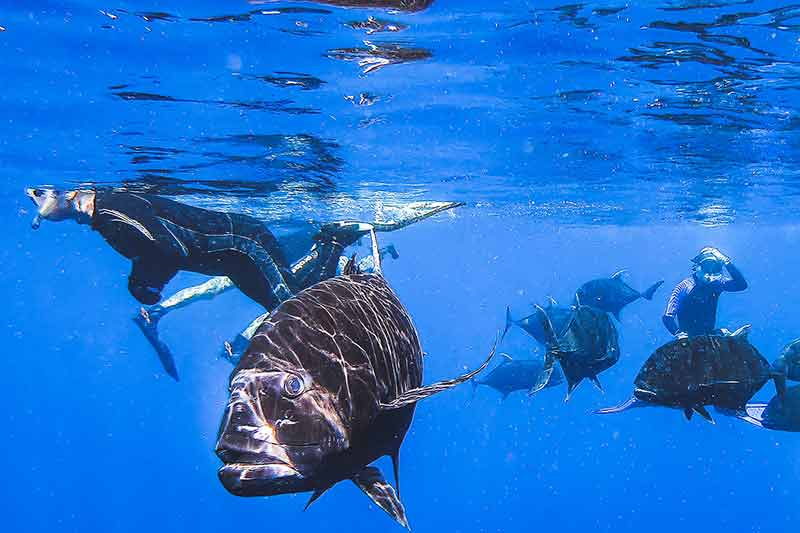
The reasons that make Christmas Island popular with scuba divers and snorkellers also create a huge appeal to fishers, especially sport fishers.
The relatively deep drop-offs inshore mean a small boat is all that is necessary for some large fish action such as giant trevally, sailfin, wahoo and tuna.
There is also saltwater fly fishing and some good coastline spots for both experienced and novice anglers. But talk with the local fishing businesses to get first-hand information before you set out.
However, be aware that ecotourism and conservation efforts mean there is an emphasis on catch and release. And note that spearfishing is also not allowed in Flying Fish Cove or National Park waters which extend 50m beyond the low water line.
Christmas Island Flag
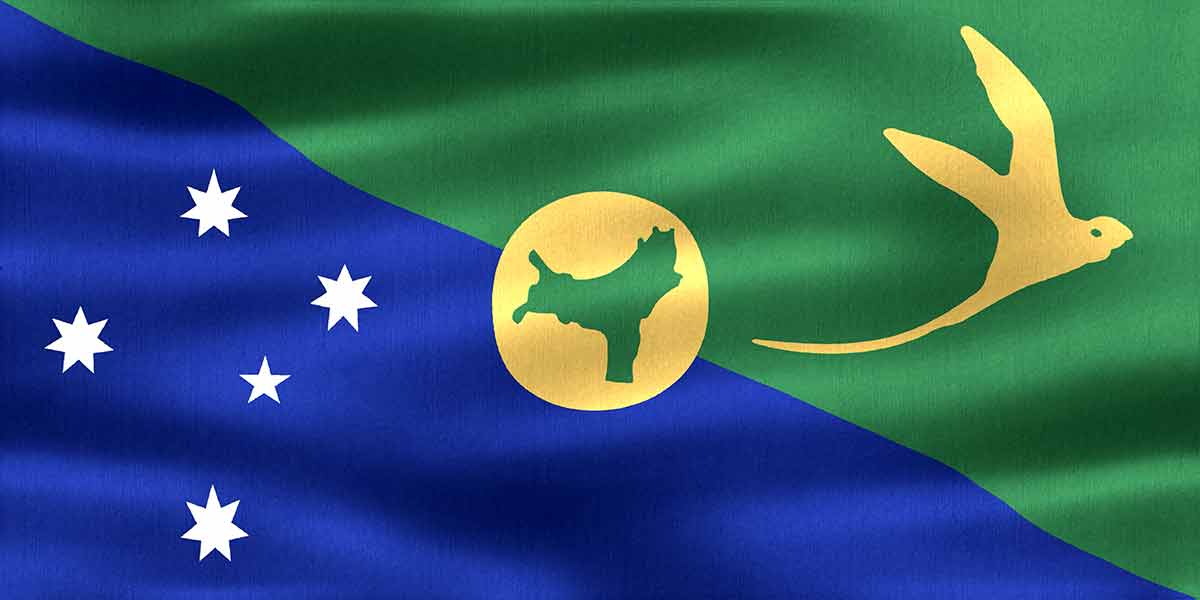
The island’s flag was created by Tony Couch, an Australian from Sydney, who won a flag design competition earning a mere $100 prize!
The civil and state flag was adopted in 1986 but only made official in 2002.
It is green, gold, white and blue, and contains the 5 stars of the Southern Cross, the endemic Silver Bosun tropic bird and a map of the island.
Christmas Island Population
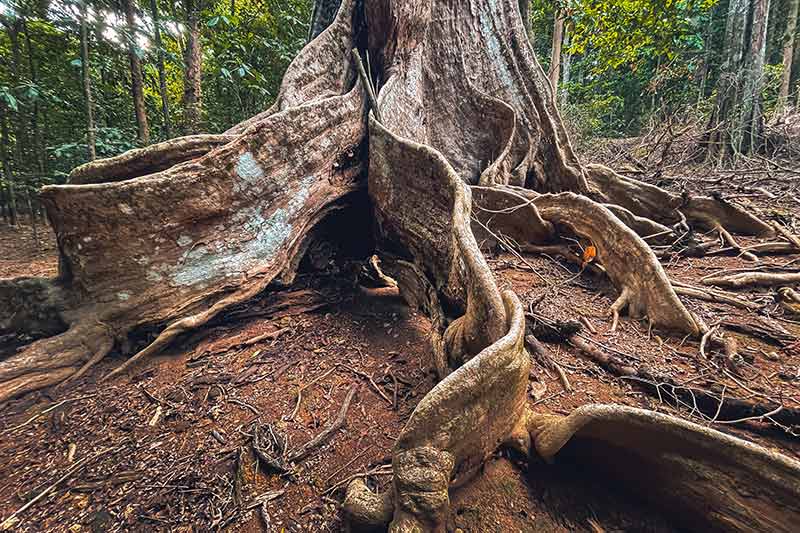
The population of the island is 1843 (2022).
Most island residents live around the north of the island, in Drumsite, Kampong, Silver City, Poon Saan and Settlement townships.
Two-thirds are male, mostly due to the main occupations of the island being male orientated.
These include especially the phosphate mines, but with other jobs in government positions, as well as hospitality and tourism.
Christmas Island People
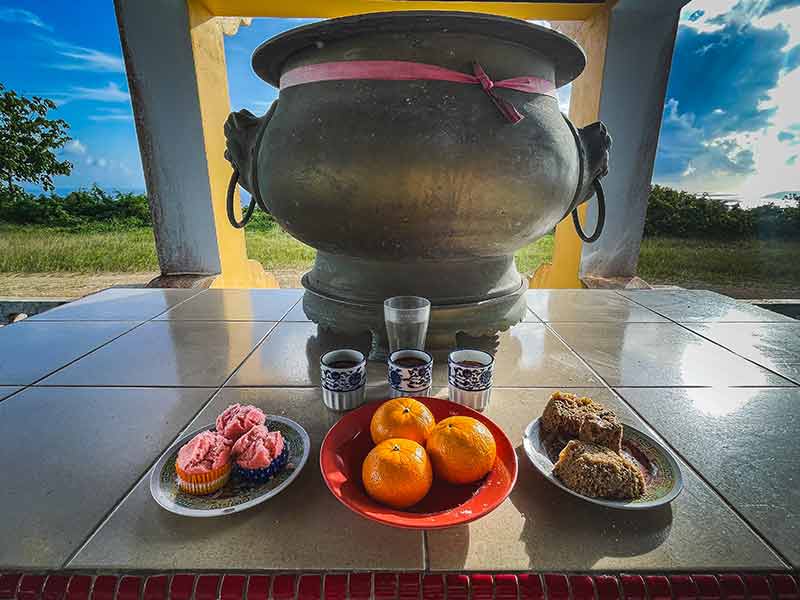
Largely due to its history, the multicultural population of the island includes the indigenous Cocos Malays who came during the early days of colonisation in 1888.
Then phosphate mining jobs attracted people from China, Indonesia, Singapore, and Japan. But in more recent times Australians joined this melting pot as the island is very much an Australian territory despite its early days of colonial rule.
Thus, Christmas Island is a real mix of ethnic groups, religions and cultures. This is best witnessed during the many diverse holidays and festival celebrations during the year.
Historical buildings scattered around the island are testament to the island’s history and people, from old forts and colonial buildings to the mosque and Malay Club in Flying Fish Cove.
Then there are the European, Muslim and Chinese cemeteries, the Japanese Shinto Shrine and the Chinese South Point Temple, to name a few.
Christmas Island Accommodation
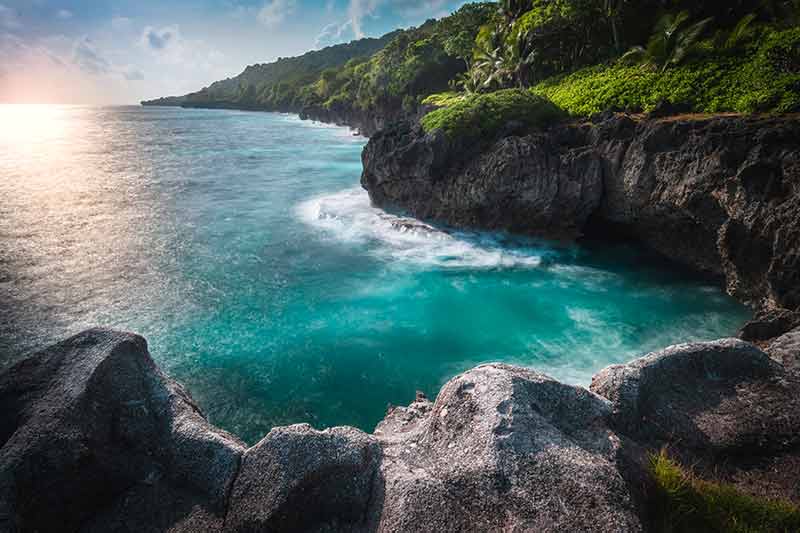
Currently, there are about 20 accommodation options for visitors wanting to stay on Christmas Island starting from around A$150 per night and are largely located on the northeast end of the island, around Settlement Township, along Gaze Road.
They include a quaint renovated cabin, tropical-style private houses including a heritage home, villas and lodges, an inn and some small resort and retreat-style housing.
Many have sea and glorious sunset views as they are situated on the cliff tops. For more information go here.
Flights to Christmas Island
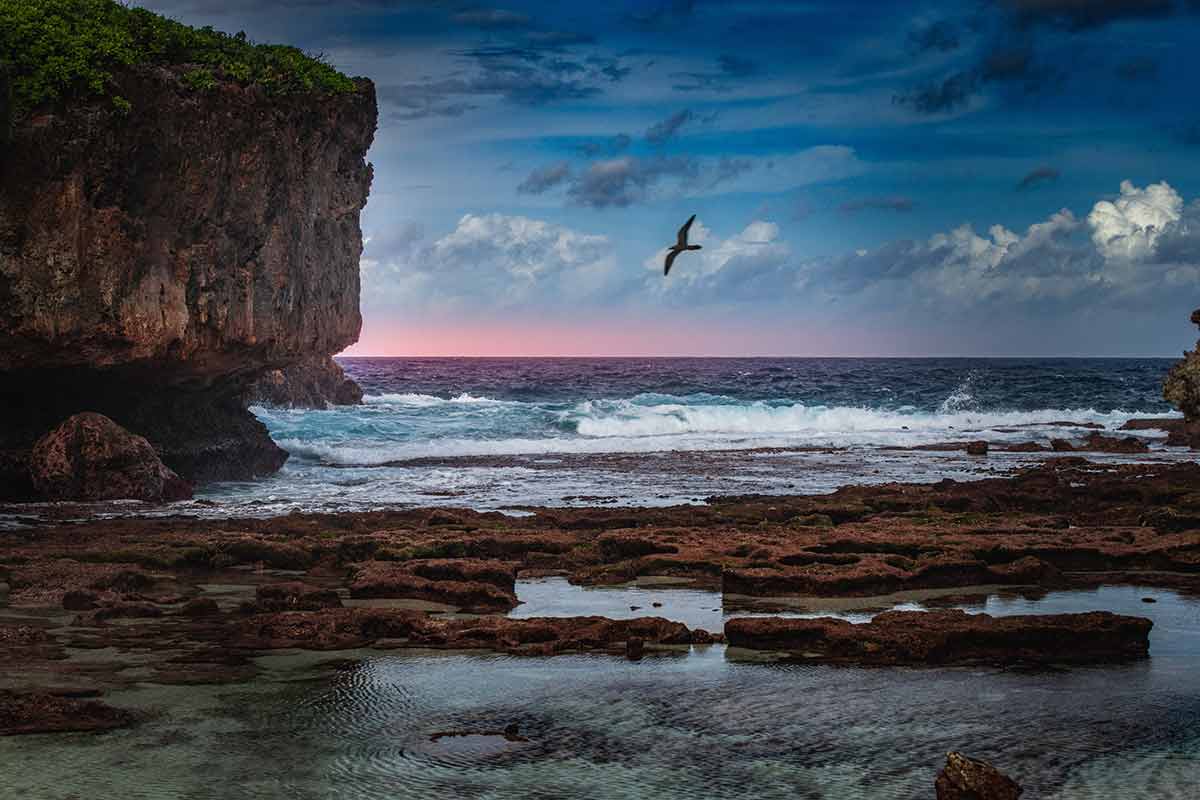
Planning a trip to Christmas Island should depend on what is your particular interest and the specific times of the year when certain events occur.
So, always look at the weather, temperature, and seasons before you travel.
The island’s proximity to Southeast Asia is dutifully noted. While pre-Covid 19 there were weekly Garuda flights from Jakarta, Indonesia, these are not currently available.
Christmas Island is only a three to four-hour flight from Western Australia. Serviced exclusively by Virgin Australia there are two flights per week from Perth, on Tuesday and Friday, dependent on weather conditions.
You need a form of photographic identification (valid passport or driver’s license). There is a requirement to still fill out an International Arrival Card even though the Island is an Australian Shire or Territory. Duty-Free items can be purchased at Perth Airport prior to departure.
Please check with Virgin Australia for up-to-date flight details, especially during the Covid-19 pandemic.
Christmas Island Airport
Christmas Island International Airport is an airport on Christmas Island, which is an Australian territory in the Indian Ocean.
The airport is situated on the west of the island, at the top of the hill which runs down to the townships of Poon Saan and Silver City.
The tourist accommodations in and around the settlement are about 20 minutes by car.
Flight arrivals are from Perth, Learmouth (Exmouth airport WA) and Cocos Keeling Islands (West Island).
A taxi service and hire car facility are available although it may be best to pre-book the latter as numbers of vehicles are limited.
Flight departures are to Perth and Cocos Keeling Islands (West Island airport).
There is a small café for nibbles or a refreshing cold drink, and a shop for those last-minute souvenirs. Free WiFi is also available.
Christmas Island Language
The official language on Christmas Island is English, which is spoken all over the Island.
However, more than half the residential population speak a language other than English at home.
These include Mandarin, Malay, and Cantonese, as well as a variety of other languages, such as Min Nan and Tagalog.
Christmas Island Song
Did you know that the “Christmas Island” song was first recorded in 1946? It was first performed by the Andrew Sisters and Guy Lombardo and His Royal Canadians.
The 78 rpm Decca single record became a jukebox hit, selling more than a million copies and remaining in print for decades after.
Since then, it has been recorded by several artists such as Bob Dylan, Bing Crosby and Jimmy Buffett, and is an old favourite when it comes to songs sung at Christmas.
Plan Your Trip

Rent A Car – Find the best car rental rates at Discover Cars. They compare car hire companies to provide you with the best deal right now.

Find A Hotel – If you’re curious about this article and are looking for somewhere to stay, take a look at these amazing hotels.





